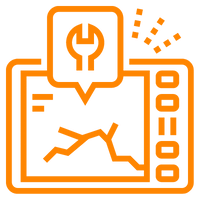Development of The Electrical Cars
Described as an era in the automotive industry, electric cars have actually been in our lives for centuries. Electric cars, which first started to be produced in the early 19th century, could not compete with internal combustion engine vehicles in many respects.
Electric cars, which travel less distance than vehicles with internal combustion engines, were not very common due to the charging problem at that time because charging stations were not common.
However, this situation has changed due to the development of technology and increasing competition in electric vehicle production, and the use of electric vehicles has become quite common today. Although electric vehicles are similar to vehicles with internal combustion engines in terms of appearance, they are actually quite different in terms of technical parts.
What parts do electric vehicles consist of?
Electric vehicles are quite different from internal combustion engines in terms of the parts they contain. For example, a vehicle with an internal combustion engine has a multi-speed transmission system, while electric vehicles do not have this system. Because electric motors provide the power instantly, there is no need to create torque through revolution as in internal combustion engines.
Again, electric vehicles do not contain many parts such as exhaust and fuel tank that should be in internal combustion engines. For this reason, the damage to the environment is very low compared to other vehicles. Apart from these, other things that should be in a car are also available in electric vehicles.
The parts that make up electric vehicles are as follows;
-Electric motor: They have the same logic as the motors found in other electrical appliances in our lives, such as the washing machine motor. They have AC current.
-Inverter: As the name suggests, the incoming AC current with this part is converted into DC current in the vehicle. These inverters can also change the rotational speed of the motor.
-Battery: Just like internal combustion engines have fuel tanks, electric vehicles also have batteries. Electric energy is stored by batteries.
-Controller: This part is similar to the Engine Control Unit found in internal combustion engines. We can define it as the ECU in electric vehicles. It provides control of the information coming from the battery and can change the inverter speed.
These are the most basic parts that distinguish electric vehicles from other internal combustion engine vehicles. Apart from these, there are parts such as temperature control system, charging input, spare battery.
To summarize briefly; Electric vehicles have quite different mechanisms from internal combustion engine vehicles. These mechanisms have varied depending on the developing technologies.
Electric cars, which contain parts of electrical logic, also have other components that should be found in cars.










.webp?size=256)

















 Cihazı.webp?size=256)






